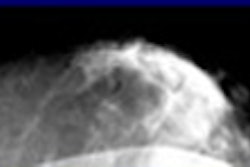The past decade has witnessed substantial growth in the practice of lung cancer screening, which has clearly benefited from increased government funding in the U.S. and Europe, as much as from improvements in multidetector-row CT scanner technology and computer-aided detection software.
Thousands of subjects including smokers and former smokers are being screened for pulmonary disease each year, while lung cancer, overwhelmingly attributable to smoking, remains the leading cause of cancer deaths. In the U.S., an estimated 46 million former smokers remain at risk for the disease, in addition to the estimated 45.8 million who continue to smoke, according to the U.S. Centers for Disease Control and Prevention.
Nevertheless, the benefits of screening broad populations of smokers and former smokers have been difficult to pin down, and studies suggest that any mortality improvements could come at a high cost. The Early Lung Cancer Action Program (ELCAP) study estimates program costs as high as $93,000 per life saved, for example.
But new research offers hope for eventually lowering screening costs through better selection of the screening population based on genetics and familial linkage, wrote Ann Schwartz and John Ruckdeschel in a review article in the American Journal of Respiratory and Critical Care Medicine (January 1, 2006, Vol. 173, pp. 16-22).
"Recently published work by Bailey-Wilson and co-workers describes results of the first family linkage study searching for genes for lung cancer," wrote Schwartz and Ruckdeschel, who are from Wayne State University's Population Studies and Prevention Program in Detroit.
In their 2004 study, Bailey-Wilson and colleagues described the results of the first family linkage study to search for genes associated with lung cancer -- a challenging task, according to Schwartz and Ruckdeschel.
"Linkage studies require the construction of large extended families, with multiple affected relatives from whom DNA can be obtained or genotypes inferred by genotyping spouses and offspring," Bailey-Wilson's group wrote (American Journal of Human Genetics, September 2004, Vol. 75:3, pp. 460-474).
In putting together their study cohort, the researchers found that 13.7% of the more than 26,000 screening patients with lung cancer had at least one first-degree relative with lung cancer. Fifty-two families were deemed useful for linkage analysis, having at least three relatives with lung cancer, and were therefore included in the study, which also included those with laryngeal and pharyngeal cancers. More than 90% of the affected population smoked cigarettes.
The evidence for linking lung cancer susceptibility to locus maps to chromosome 6q23-35 was evaluated via a formula known as HLOD (logarithm of the odds favoring genetic linkage given heterogeneity), based on segregation studies suggesting evidence for a dominant or codominant rare gene for lung cancer.
Under this model, Bailey-Wilson et al achieved a maximum HLOD of 2.79 on chromosome 6q (155 CM). In a subset of 38 families with four or more affected members, the HLOD was 3.47. In families with five or more affected family members, the HLOD was 4.26, with 94% of these families estimated to be linked to this genetic region. Thus in the most highly affected families, the HLOD exceeded the estimated critical significance threshold of 4.0, Schwartz and Ruckdeschel wrote of the study.
"In both carriers and noncarriers of a putative lung cancer susceptibility region, smoking was associated with a threefold increase in lung cancer risk," the team reported. "However, it was only among the noncarriers that the typical dose response relationship was observed, with a 2% increase in lung cancer risk with each pack year of exposure (p = 0.0023). Among the carriers, this dose-response relationship was not apparent, indicating that any amount of smoking increases risk in this group."
Thus, the Bailey-Wilson group's results offered the first evidence supporting linkage between a specific region on 6q23-25 (146-164 cM) and lung, laryngeal, and pharyngeal cancer.
A specific lung cancer gene has not yet been identified; however, much has been learned about the role of genetics in the development of pulmonary disease. Understanding the risks associated with a family history of lung cancer can be useful in counseling patients in the clinical setting, perhaps with regard to recommendations for lung cancer screening.
"Airway obstruction has been shown prospectively to increase risk of developing lung cancer, as has COPD (chronic obstructive pulmonary disease), and has the same underlying risk profile: "about 10% to 20% of smokers develop COPD and there is familial aggregation of COPD and lung function," Schwartz and Ruckdeschel reported.
As far back as the 1970s, Schwartz and Ruckdeschel noted, Cohen et al found a familial component to lung function, COPD, and lung cancer that was not explained by smoking or the genotype for Alpha1-antitrypsin, an antiprotease that binds and inhibits neutrophil serine proteases such as elastine in the lung, protecting against lung tissue destruction.
Their study found that first-degree relatives of patients with lung cancer and those with COPD showed significantly greater impaired lung function (forced expiratory volume in one second [FEV1] < 68% of forced vital capacity [FVC]) than relatives of neighborhood control subjects, after adjusting for age, race, sex, and smoking (Johns Hopkins Medical Journal, 1975, Vol. 137, pp. 95-104; Lancet, 1977, Vol. 2, pp. 523-526).
Since then several other linkage studies have also been undertaken to identify genes for lung function and COPD, Schwartz and Ruckdeschel wrote.
In a re-examination of Framingham Heart Study subjects, Joost et al identified chromosomal regions that influenced FEV1 and FVC lung function parameters. A region on chromosome 6q (10 cM) was most strongly linked to FEV1 with an LOD (logarithm of the odds favoring genetic linkage) score of 2.4 (American Journal of Respiratory and Critical Care Medicine, March 15, 2002, Vol. 165:6, pp. 795-799).
In a similar linkage study of 72 families, evidence for linkage of lung function to mild obstructive lung disease in smokers was reported on chromosome 12p (LOD = 3.14). Linkage was also seen in postbronchodialator forced expiratory flow, midexpiratory phase, in smokers in the same families (LOD = 5.03) (American Journal of Respiratory and Critical Care Medicine, December 15, 2004, Vol. 170:12, pp. 1294-1301).
"Alternative approaches to gene identification include candidate gene association studies, and work in this area also suggests possible overlap between genes predicting lung function, COPD, and lung cancer," Schwartz and Ruckdeschel wrote in their review.
The candidate genes include Alpha1-antitrypsin, which has its gene on chromosome 14q32.1 and over 75 alleles have been identified. "It is well known that individuals homozygous for the Z allele are at high risk of COPD," Schwartz and Ruckdeschel wrote.
Neutrophil elastase has also been evaluated as a candidate in lung cancer etiology, the team reported, with the gene encoding this enzyme (ELA2) located on chromosome 19p13.3.
"Taniguchi and colleagues identified two polymorphisms in the promotor (T-903G [REP-a] and G-741A [REP-b]) and evaluated the contribution to lung cancer risk," Schwartz and Ruckdeschel noted. "The TT genotype at REP-a was associated with 2.3-fold increased risk of lung cancer ... whereas the GG genotype at REP-b was associated with a 1.4-fold increased risk" (Clinical Cancer Research, April 8, 2002, Vol. 8:4, pp. 1115-1120). Similar results were reported by Park et al.
"In addition to breaking down lung tissue, neutrophil elactase activates matrix metalloproteinases (MMPs), a family of more than 20 proteolytic enzymes that degrade extracellular membranes," the team reported. Three of these, MMP1, MMP12, and MMP9, have been associated with lung disease in animal models, and haplotypes at MMP1/MMP12 and an MMP1 promoter single nucleotide polymorphism (SNP), G-1607GG, have been associated with lung function decline in smokers.
COPD is characterized by airway inflammation induced by cigarette smoke, and "animal models have implicated IL-13 overexpression in MMP- and cathepsin-dependent emphysema, elevated mucus production, and COPD-like inflammation," the team noted.
Also, the gene for microsomal epoxide hydrolase found in bronchial epithelial cells (EPHX1, mapped to chromosome 1q42.1) makes these tissues less reactive to tobacco smoke, depending on the activity of two related polymorphisms. One large study found that lung cancer risk associated with this gene varied with pack years of smoking (Cancer Epidemiology Biomarkers & Prevention, May 2001, Vol. 10:5, pp. 461-466). Schwartz and Ruckdeschel cited many other examples in the literature to illustrate the apparent relationships between genetics and pathology.
Of course, stopping smoking is the best way to reduce lung cancer risk, but lung cancer and mortality would remain high for several decades even if everyone quit immediately, Schwartz and Ruckdeschel wrote.
"While debate continues about the efficacy of spiral computed tomography screening for lung cancer in broad populations of smokers, the ability to focus screening efforts in a truly high-risk subpopulation would clearly be of benefit now," they wrote. "Pack years of exposure and lung function have been used as criteria for entry into screening trials and chemoprevention studies. Consistent epidemiologic data and the recent lung cancer linkage results suggest that family history should be included in the 'high risk' definition as well. We are of the opinion that studies of spiral computed tomography screening and lung function testing is warranted in current or former smokers with a strong family history of lung cancer, particularly when age at diagnosis of the family member is young."
Associations have been found between markers on chromosome 6q to lung cancer and lung function, and on chromosome 12 to lung cancer, COPD, and lung function, in addition to overlapping candidate genes for these pathologies, Schwartz and Ruckdeschel noted.
"We suggest that the collection of family history of lung cancer in patients with COPD and family history of COPD in patients with lung cancer become routine," they wrote. The larger linkage and association studies needed to verify these genetic associations would benefit from the collection of such data, they concluded.
By Eric Barnes
AuntMinnie.com staff writer
January 2, 2006
Related Reading
Pulmonary function may stay stable after lung cancer treatment, December 21, 2005
Tumor staging for lung cancer may need revision, December 16, 2005
Radiofrequency ablation promising against lung cancer, December 15, 2005
Lung CAD shows limited sensitivity gains, finds nodules radiologists missed, December 13, 2005
Management strategies evolve as CT finds more lung nodules, August 19, 2005
Copyright © 2006 AuntMinnie.com




















